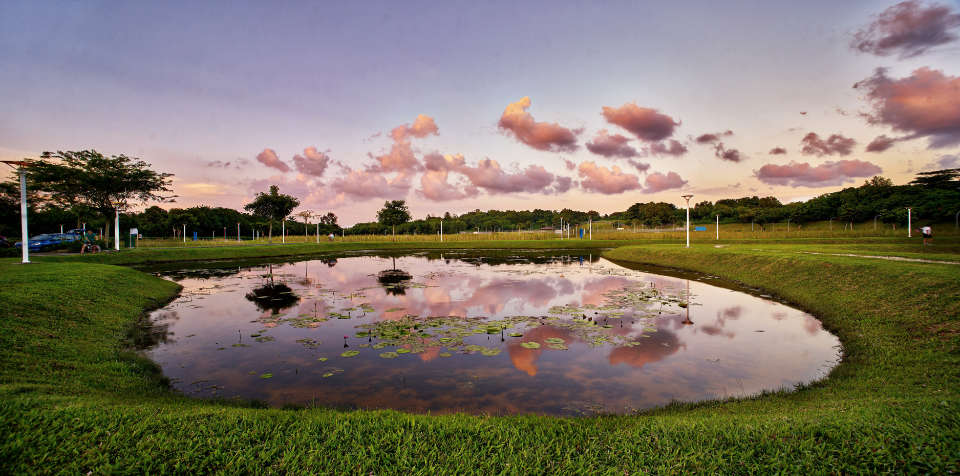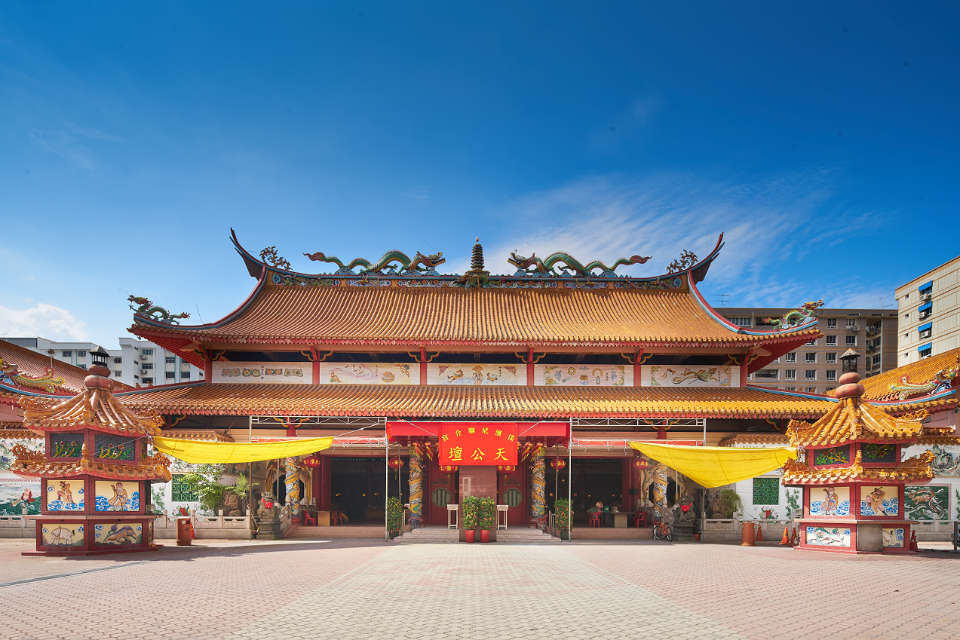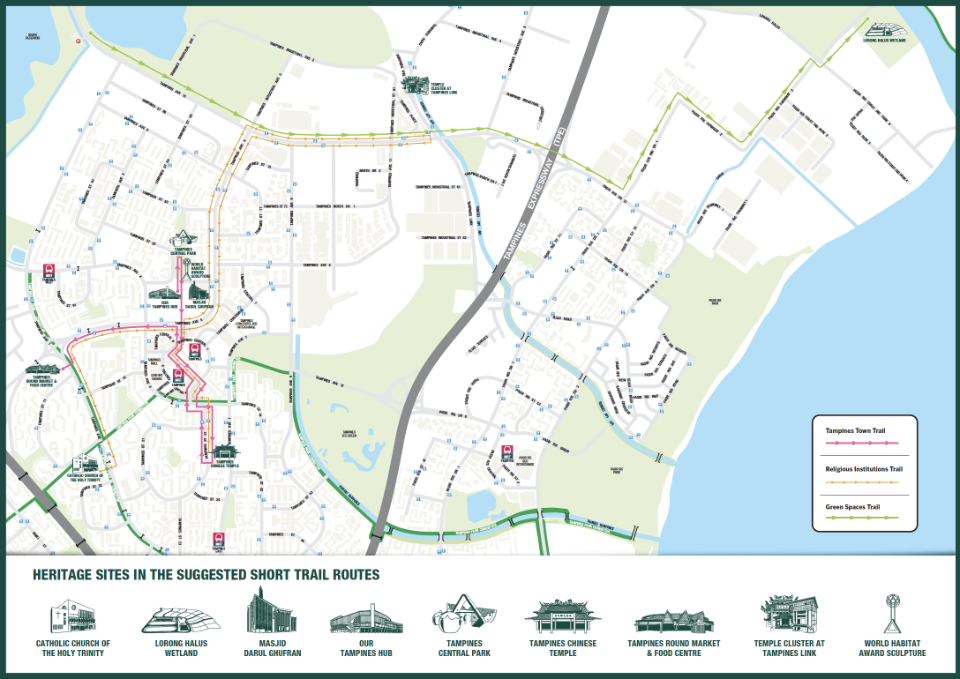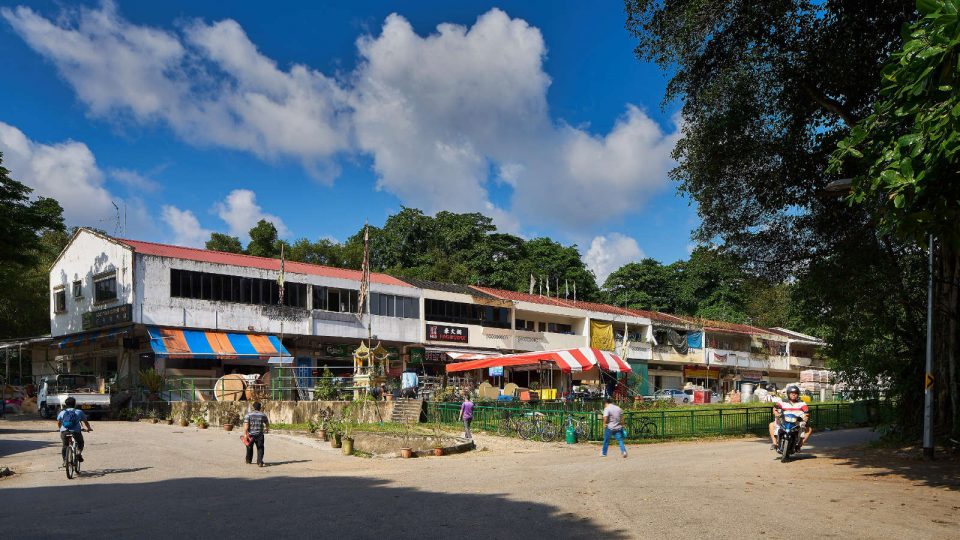Tampines Heritage Trail is the 17th heritage trail launched by National Heritage Board’s (NHB). Trail-blazers can discover iconic sites of Tampines – a once rural district that has been transformed into an award-winning town.
Find out how to explore Tampines Heritage Trail in 3 different ways.
1. Learn Tampines’ Past at Green Spaces Trail – 8km
Estimated Time Needed:: 1 hour; on bicycle

This trail takes you through a few scenic spots, including parks and green spaces, converted quarry, a cluster of temples, former Tampines kampong, as well as Lorong Halus, a former landfill, turned wetland.
Start your journey from Bedok Reservoir Park, which was formerly a sand quarry. Make your way along Tampines Ave 10 until Tampines Link, and turn left. Here, you’ll find a cluster of temples, including Kew Sian King Temple. At the end of the cluster Ave lies a row of shophouses that was once part of the former Hun Yeang Village. Have a short rest and a drink here before continuing your journey.
Located on Tampines Road, near Hun Yeang Road, is the Tampines NEWater Service Reservoir, which can be easily identified as two inverted cone-shaped water tanks. Head to Tampines Ave 10 and continue your journey to Lorong Halus Wetland, formerly Serangoon Sludge Treatment Works established in 1941. The trail ends here, but you can continue to Punggol Waterway or Coney Island to explore more of Singapore’s natural beauty.
2. Appreciate Cultural and Faith Diversity at Religious Institution Trail – 9km
Estimated Time Needed: 1.5 hours; bus and walk

The Religious Institution Trail allows you to discover various places of worship, some of which have been in Tampines for more than a century. Explore the unique architecture and religious practices that define these institutions.
This trail starts at Tampines Chinese Temple which houses a 270m-long dragon sculpture that adorns the temple’s perimeter as well as two Tempinis trees planted within the temple’s compound. Then, proceed to Masjid Darul Ghufran which has a distinctive towering minaret. The mosque is undergoing upgrading works and is slated to re-open by end of 2018.
Continue your journey to Tampines Link, where you’ll find a cluster of temples, including Jiutiaoqiao Xinba Nadutan Temple, which is best known for housing shrines of multiple faiths, such as Taoist Tua Pek Kong, the Hindu god Ganesha and the Malayan deity Datuk Gong. Finally, head to Catholic Church of the Holy Trinity, whose main hall features stained glass panels imported from Milan, Italy.
3. Explore Tampines Town Trail – 4.5km
Estimated Time Needed: 1.5 hours; bus and walk

Tampines Town Trail highlights town planning innovations as well as everyday heritage sites that are part and parcel of the Tampines community.
Our Tampines Gallery, located on level 2 of Tampines Regional Library at Our Tampines Hub, is a good starting point to learn about the history of Tampines and enjoy community stories shared by residents. Just outside Our Tampines Hub, at the west exit of Festive Walk, is the sculpture of World Habitat Award, which recognises the innovative town planning strategies adopted by HDB for Tampines Town.
Next, proceed to Tampines Central Park, where you can find HDB’s iconic 1980s mangosteen and watermelon Playgrounds. Then, make your way to Tampines Chinese Temple which houses 12 constituent temples. End your trail at Tampines Round Market & Food Centre and treat yourself to local dishes from numerous famous hawker food stalls.
PS: You’re encouraged to do this trail in the morning because most food stalls at Tampines Round Market & Food Centre are only open until 3 p.m.

Tampines Heritage Trail Maps
Facts about Tampines you might not know about:
- The name Tampines is derived from the Streblus elongatus tree, known to locals by its Malay name: Tempinis.
- Tampines used to be much bigger and include Pasir Ris and Hougang in the past. That’s why older folks who stayed as far as Defu and Hougang also called themselves as residents of Tampines.
- Tampines Road used to be the main access to the ulu district. The road was mostly used by coconut plantation workers, sand miners and travelling hawkers, who catered to far-flung village clusters in Tampines.
- Tigers used to roam the forested areas in Tampines and Changi, and there was a notice board that warned: “Beware of Tigers” on Tampines Road. This continued until the 1930s.
- In the 1970s, a panther was spotted by villagers in the forested area. It took 24 days and more than 100 police officers, farmers and game hunters to finally catch the panther.
- In 1967, Golden Palace Holiday Resort was a huge resort consisting of a nightclub, restaurants, snack bar, motel and a man-made lake. The resort has since closed in 1971, with the only remnant being the fishing pond located within Pasir Ris Town Park.
- During the development boom in the 1960s, landowners in Tampines converted the land into sand quarries. This sand was used for East Coast Reclamation Scheme as well as the construction of Toa Payoh Town and Changi Airport.
- In the past, human waste was collected by labourers and transported to tanks at various sewage stations. Lorong Halus was the last of these disposal stations, which was officially discontinued in January 1987.
Do heritage landmarks play a part in planning your running route?





